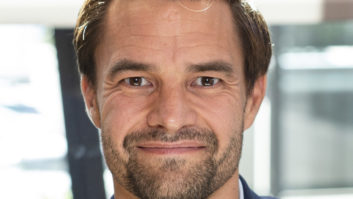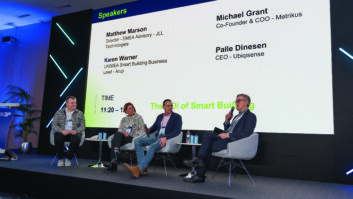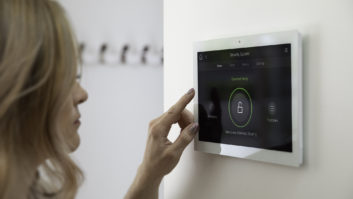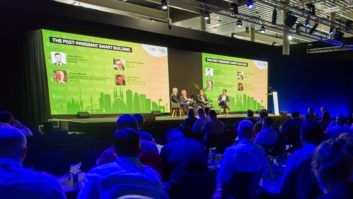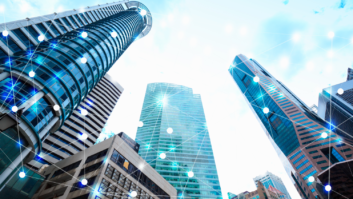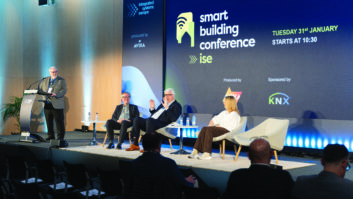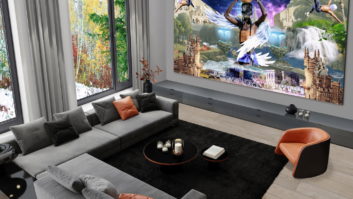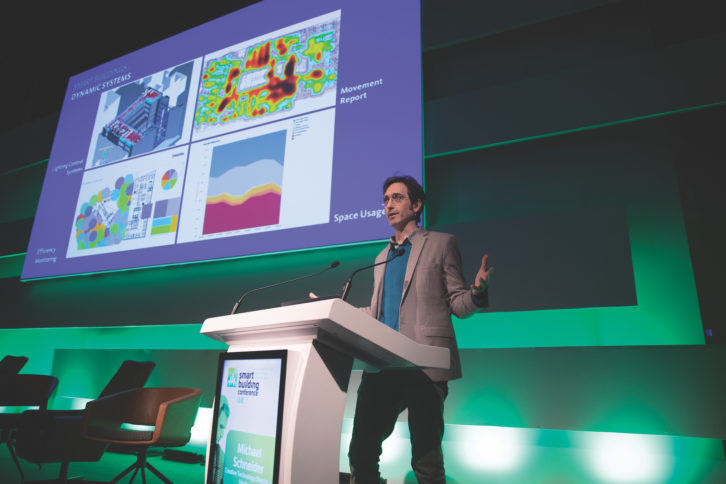
Smart buildings should not just automate functions such as light or temperature control – they need to engage with the inhabitants within them, Gensler’s creative technology head argued during Monday’s Smart Buildings Conference.
Speaking on the Smart Building Conference session Smart Buildings, Smart Experiences, which explored the built environment as a smart platform, Michael Schneider said it wasn’t the front or back end control panels designers and integrators should be thinking about, but the people.
“Typical tools for smart buildings are sensors and interfaces, but what I would like to suggest is that, if we are really thinking about performance of the space, then we need to think about the performance of the people in that space,” said Schneider.
“It’s not just the lights, sound, temperature, but about people, storytelling, communities, and social elements. We need to create immersive touchpoints which are the core endpoint for smart buildings.”
Schneider told delegates that smart building designers need to adopt a “human-centric” approach and engage not just with a building’s operations people, but also with heads of marketing and HR. This, he said, would mean that buildings can be used as communication tools for staff, new recruits and clients.
“We need to reframe the design challenge and ask who we are building these smart buildings for,” he added.
As a recent case in point, he cited a project Gensler undertook for Delos – a wellness firm whose mission is to make buildings healthier workplaces through sensors control and automation.
Gensler was commissioned to design Delos’ own HQ and a branded digital experience that conveyed its key messages to staff.
Several data visualisations in the reception area were crafted to check the health of the building. These were emblazoned onto a background colour that morphed throughout the day and the year based on the position of the sun.
A stairwell installation comprising a variety of interactive digital displays was also designed to encourage staff to become more active, emitting light patterns inspired by rain patterns and the Northern Lights as more and more staff move up and down the stairs.
“By encouraging physical movement in the workplace through an installation that encourages people to change their behaviour and celebrate movement, the people become part of the overall story of the company,” Schneider said.
